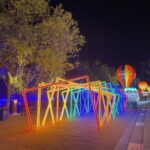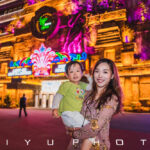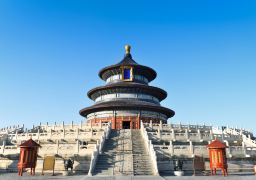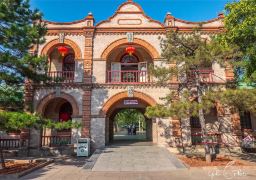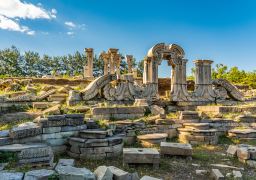Wu Ta Si, located in Wuta Temple Village, Bai Shi Qiao, Haidian District, Beijing, within the Beijing Stone Carving Art Museum, was originally constructed during the Yongle period of the Ming Dynasty. It was the core structure of the former Wu Ta Si Temple. After its destruction in the late Qing Dynasty, only the Vajra Seat Pagoda remained within the temple. After liberation, in the late 1980s, government departments established the Beijing Stone Carving Art Museum on the site of the former Wu Ta Si, focusing on displaying stone carvings from the Beijing area.
The Beijing Stone Carving Art Museum is set up on the east, north, and west sides of the Vajra Throne Pagoda, with nine exhibition areas displaying over 500 stone carvings. In addition to steles, epitaphs, stone carvings, and sculptures, there is a unique exhibition area dedicated to the display of scholar’s steles, which is quite distinctive. The central pagoda, also known as the Vajra Seat Pagoda, is one of the six existing Vajra Seat Pagodas in China with an earlier era and more beautiful design. Its northern part is built with bricks, and the exterior is entirely clad in blue-white stone. The pagoda sits on a base carved with Sanskrit and Buddhist motifs such as Buddha figures and ritual instruments. Above the base is the Vajra Seat, consisting of five tiers, each with projecting stone eaves. The seat is adorned with various Buddhist carvings. In the center and at the four corners of the Vajra Seat, there are small pagodas, with the carvings on the five small pagodas concentrated on the base and the first tier, similar to those on the Vajra Seat. The central small pagoda has a pair of Buddha’s feet carved on the south side of its base, symbolizing the Buddha’s presence throughout the world. Apart from the Vajra Seat Pagoda in Beijing’s Wu Ta Si, the other five Vajra Seat Pagodas are located in Beijing’s Bi Yun Temple, Beijing’s Huang Si, Hohhot’s Wu Ta Si in Inner Mongolia (Vajra Seat Relics Pagoda), Miao Lian Temple in Kunming, Yunnan, and Guang Hui Temple in Zhengding, Hebei. The museum is open all year round from Tuesday to Sunday, 09:00-17:00; closed all day on Mondays; and open on New Year’s Day, Spring Festival, Qingming Festival, Labor Day, Dragon Boat Festival, Mid-Autumn Festival, and National Day, 09:00-17:00.Wu Ta Si Pagoda
Wu Ta Si, located in Wuta Temple Village, Bai Shi Qiao, Haidian District, Beijing, within the Beijin[...]
